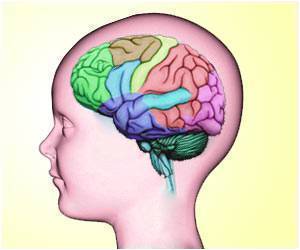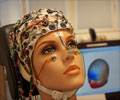The largest epilepsy study ever conducted set out to investigate anatomical similarities and differences in the brains of individuals with different types of epilepsy.

‘Advances in neuroimaging techniques have enabled the detection of structural alterations in the brains of people with epilepsy that hadn't been noticed previously.’





Altogether, the study included data for 2,149 people with epilepsy and 1,727 healthy control subjects (with no neurological or psychiatric disorders). The Brazilian Research Institute for Neuroscience and Neurotechnology (BRAINN), which participated in the multicenter study, was the center with the largest sample, comprising 291 patients and 398 controls. Hosted in Brazil, at the State University of Campinas (UNICAMP), BRAINN is a Research, Innovation and Dissemination Center (RIDC http://cepid.fapesp.br/en/home/) supported by the Sao Paulo Research Foundation - FAPESP.
"Each center was responsible for collecting and analyzing data on its own patients. All the material was then sent to the University of Southern California's Imaging Genetics Center in the US, which consolidated the results and performed a meta-analysis," said Fernando Cendes, a professor at UNICAMP and coordinator of BRAINN. A differential study
All volunteers were subjected to MRI scans. According to Cendes, a specific protocol was used to acquire three-dimensional images. "This permitted image post-processing with the aid of computer software, which segmented the images into thousands of anatomical points for individual assessment and comparison," he said. Cendes also highlighted that this is the first epilepsy study built on a really large number of patients, which allowed researchers to obtain more robust data. "There were many discrepancies in earlier studies, which comprised a few dozen or hundred volunteers."
The patients included in the study were divided into four subgroups: mesial temporal lobe epilepsy (MTLE) with left hippocampal sclerosis, MTLE with right hippocampal sclerosis, idiopathic (genetic) generalized epilepsy, and a fourth group comprising various less common subtypes of the disease. The analysis covered both patients who had had epilepsy for years and patients who had been diagnosed recently. According to Cendes, the analysis - whose results were published in the international journal Brain - aimed at the identification of atrophied brain regions in which the cortical thickness was smaller than in the control group.
First analysis
Advertisement
"Ordinary MRI scans don't show anatomical alterations in cases of genetic generalized epilepsy," Cendes said. "One of the goals of this study was to confirm whether areas of atrophy also occur in these patients. We found that they do." This finding, he added, shows that in the case of MTLE, there are alterations in regions other than those in which seizures are produced (the hippocampus, parahippocampus, and amygdala). Brain impairment is, therefore, more extensive than previously thought. Cendes also noted that a larger proportion of the brain was compromised in patients who had had the disease for longer. "This reinforces the hypothesis that more brain regions atrophy and more cognitive impairment occurs as the disease progresses."
Advertisement
In the GGE group, the researchers observed atrophy in the thalamus, a central deep-lying brain region above the hypothalamus, and in the motor cortex. "These are subtle alterations but were observed in patients with epilepsy and not in the controls," Cendes said. Genetic generalized epilepsies (GGEs) may involve all brain regions but can usually be controlled by drugs and are less damaging to patients.
Future developments
From the vantage point of the coordinator for the FAPESP-funded center, the findings published in the article will benefit research in the area and will also have future implications for the diagnosis of the disease. In parallel with their anatomical analysis, the group is also evaluating genetic alterations that may explain certain hereditary patterns in brain atrophy. The results of this genetic analysis will be published soon. "If we know there are more or less specific signatures of the different epileptic subtypes, instead of looking for alterations everywhere in the brain, we can focus on suspect regions, reducing cost, saving time and bolstering the statistical power of the analysis. Next, we'll be able to correlate these alterations with cognitive and behavioral dysfunction," Cendes said.
Source-Eurekalert















